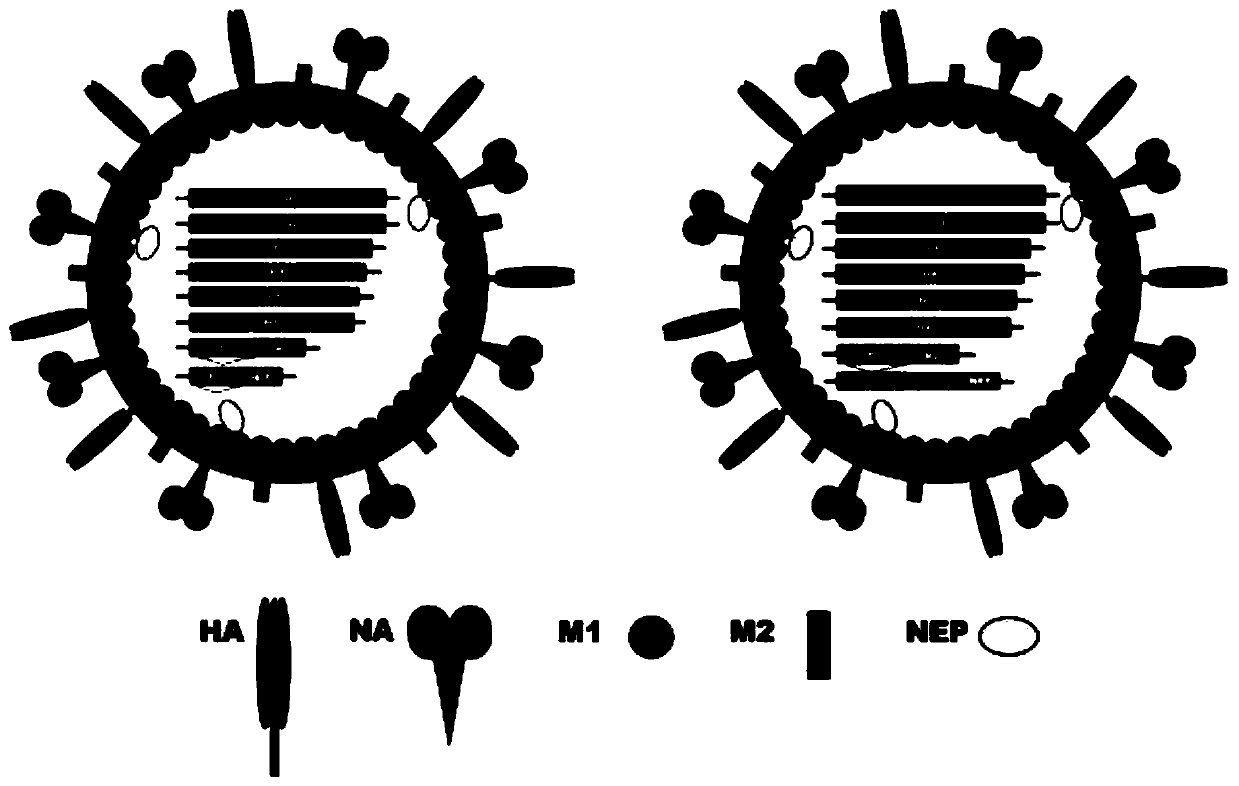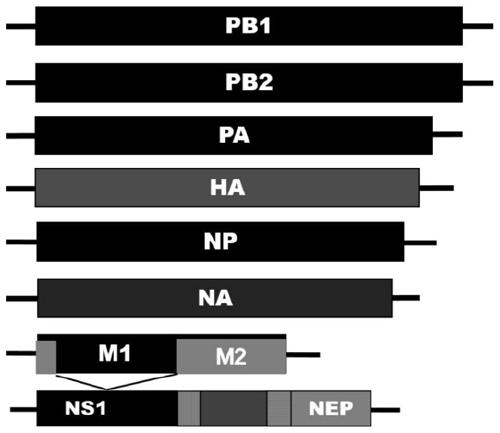Recombinant influenza A virus carrying hepatitis B virus gene, host cell, preparation method for recombinant influenza A virus and application of recombinant influenza A virus
A technology of influenza A virus and hepatitis B virus, applied in the field of biopharmaceuticals, to avoid injection pain, ensure shearing, and high shearing efficiency
- Summary
- Abstract
- Description
- Claims
- Application Information
AI Technical Summary
Problems solved by technology
Method used
Image
Examples
Embodiment 1
[0044] Embodiment 1: Construction of recombinant NS fragment
[0045] 1. Use molecular biology methods to carry out synonymous point mutations at the RNA splicing site in the NS fragment, and mutate 525-CCAGGA-530 into 525-CCCGGG-530.
[0046] 2. The hepatitis B virus gene was obtained by PCR from the plasmid preserved in our laboratory.
[0047] 3. As shown in the figure, link the mutated NS fragment to the exogenous hepatitis B virus gene through the two short peptides Linker1 and Linker2 according to the open reading frames of NS1 and NS2, so as to obtain the recombinant NS fragment. .Using molecular biology methods, the target gene sequence is connected with the bidirectional transcription expression vector pHW2000, and positive clones are selected. The constructed recombinant plasmid was identified by sequencing, and the size of the fragment was exactly the same as expected, and there was no gene mutation.
Embodiment 2
[0048] Example 2: Rescue of Recombinant Influenza A Virus Strain Carrying Hepatitis B Virus
[0049] Co-transfect 293T or cos cells with plasmids carrying influenza virus wild-type PB2, PB1, PA, HA, NP, NA, M fragments and recombinant plasmids carrying NS and target fragments, and can also transfect 293T or COS and MDCK The co-cultured cell line was replaced with DMEM medium containing TPCK trypsin after 6 h. The final concentration of TPCK trypsin was 1ug / ml. Incubate for 48 hours at 37° C. in a 5% CO2 cell culture incubator, and collect the supernatant. The collected supernatant removes cell debris and infects MDCK cells. After 48-72 hours, the supernatant of MDCK cells was collected for plaque purification. After three rounds of plaque purification, the virus was amplified in MDCK, and finally a recombinant influenza A virus strain carrying hepatitis B virus was obtained.
Embodiment 3
[0050] Example 3: Plaque Purification of Recombinant Influenza A Virus Strain Carrying Hepatitis B Virus
[0051] Plating: Digest the MDCK cells in the cell flask with trypsin, spread them into 6-well plates, and the number of cells per well is 10 6 . After the MDCK in the six-well plate adhered to the wall and grew into a single layer of cells, the medium was aspirated and washed twice with PBS.
[0052] Adsorption: The collected virus-containing supernatant was diluted 10-fold with PBS solution containing 0.3% BSA, and added to a six-well plate at a dose of 400ul per well, and 2-3 auxiliary wells were set for each gradient. The adsorption time was 1 h, and the plate was shaken every 15 minutes during the adsorption period to distribute the supernatant evenly and prevent the cells from dehydrating.
[0053] Overlay: After the adsorption is completed, wash off the residual supernatant with PBS. Mix 2×DMEM with melted 0.6% low melting point agarose 1:1 and add TPCK trypsin, ...
PUM
 Login to View More
Login to View More Abstract
Description
Claims
Application Information
 Login to View More
Login to View More - R&D
- Intellectual Property
- Life Sciences
- Materials
- Tech Scout
- Unparalleled Data Quality
- Higher Quality Content
- 60% Fewer Hallucinations
Browse by: Latest US Patents, China's latest patents, Technical Efficacy Thesaurus, Application Domain, Technology Topic, Popular Technical Reports.
© 2025 PatSnap. All rights reserved.Legal|Privacy policy|Modern Slavery Act Transparency Statement|Sitemap|About US| Contact US: help@patsnap.com



